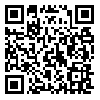Articles in Press
Back to the articles list |
Back to browse issues page
1- Assistant Professor of Tourism, Department of Geography and Urban Planning, Faculty of Literature and Humanities, University of Guilan, Rasht, Iran , H.beigi@guilan.ac.ir
2- MA Graduate in Geography and Tourism Planning (Destination Planning), Department of Geography and Urban Planning, Faculty of Literature and Humanities, University of Guilan, Rasht, Iran
2- MA Graduate in Geography and Tourism Planning (Destination Planning), Department of Geography and Urban Planning, Faculty of Literature and Humanities, University of Guilan, Rasht, Iran
Abstract: (146 Views)
Networking among Iran’s literary celebrity house-museums represents an emerging strategy for enhancing the cultural and international roles of these spaces—an issue that has yet to be systematically addressed in Iranian academic literature. Given the unique potential of literary house-museums in preserving and representing national memory, strengthening cultural identity, and contributing to cultural diplomacy, this study aims to analyze the structure and function of this network and identify the requirements for its development. Employing a qualitative approach and thematic analysis method, data were collected through semi-structured interviews with managers, experts, and cultural actors across 8 active literary house-museums in Iran. Additional materials, including official documents, website content, and programmatic activities, were also examined. Findings indicate that literary house-museums currently lack a cohesive and sustainable network, with most of their activities being fragmented and uncoordinated. Key obstacles to network development include the absence of a unified structure, weak collaborative planning, inadequate digital infrastructure, and institutional misalignment. Conversely, the presence of a loyal audience base, rich cultural identity, and international appeal of Iranian literary figures present significant opportunities for establishing a dynamic new network. The study concludes by emphasizing the urgent need for a national "Network of Literary House-Museums of Iran" to foster synergy, experience-sharing, co-creation of cultural programs, and expansion of their cultural and diplomatic impact. The core finding underscores that only within an integrated network framework can literary house-museums transform into proactive agents of national and international cultural engagement, overcoming their current passive state.
Keywords: Literary house-museum, cultural network, cultural diplomacy, literary identity, literary tourism.
Send email to the article author
| Rights and permissions | |
 |
This work is licensed under a Creative Commons Attribution-NonCommercial 4.0 International License. |






